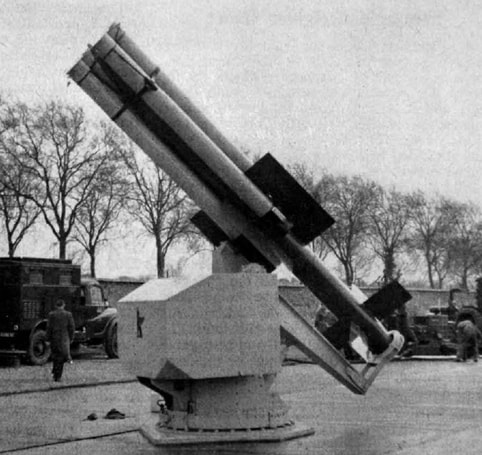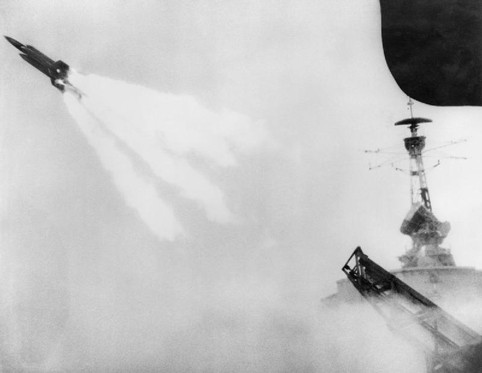Despite being proposed in the early 20th century, work on surface to air guided missiles didn’t really begin in earnest until after World War II, and during the late 1940s and 1950s the world’s major military powers all began to introduce variants of a technology that was to fundamentally reshape warfare.

In 1959, The Engineer got its first look at the The Armstrong- Whitworth ” Seaslug ”, an advanced new weapon designed to enable the UK Royal Navy to engage reconnaissance aircraft or bombers.
Work on the weapon - which was the navy’s first generation Surface to air missile - began in 1949 and built on the progress made by Fairey Aviation’s LOPGAP (Liquid Oxygen / Petrol Guided Anti-aircraft Projectile) project.
Speculating on what can gleaned from the image, The Engineer wrote that ‘one striking characteristic visible is the way in which the weapon has been optimised for the minimum stowage and handling volume, with short wings and finless boosts : notice also that the boosts now extend virtually the full length of the nose.’

‘The flat caps seen appear to be secured by flagged safety pins,’ continued the article, ‘the explanation for this may be that frangible cases have been adopted, as on “Nike” installations, to reduce the risk of damage to the ship’s consorts.’
Later reports revealed that the missile had four wrap-around booster motors which separated after launch, after which a main motor powered the missile to its target. The weapon was guided using laser beam-riding, a technique that continually illuminates the target with a directing radar. ‘An accuracy of a very high order is claimed for this weapon,’ wrote The Engineer, ‘it will be recalled that a warship is a difficult target for aircraft, and can expect to engage them at relatively close range.’
The Mark 1 Seaslug entered service in 1961, whilst a Mark 2 version, which boasted an improved guiding system, became operational in 1965. A proposed nuclear variant - named Winkle - was never built.
The missile was last used in anger during the Falklands war of 1982




Poll: Should the UK’s railways be renationalised?
I think that a network inclusive of the vehicles on it would make sense. However it remains to be seen if there is any plan for it to be for the...